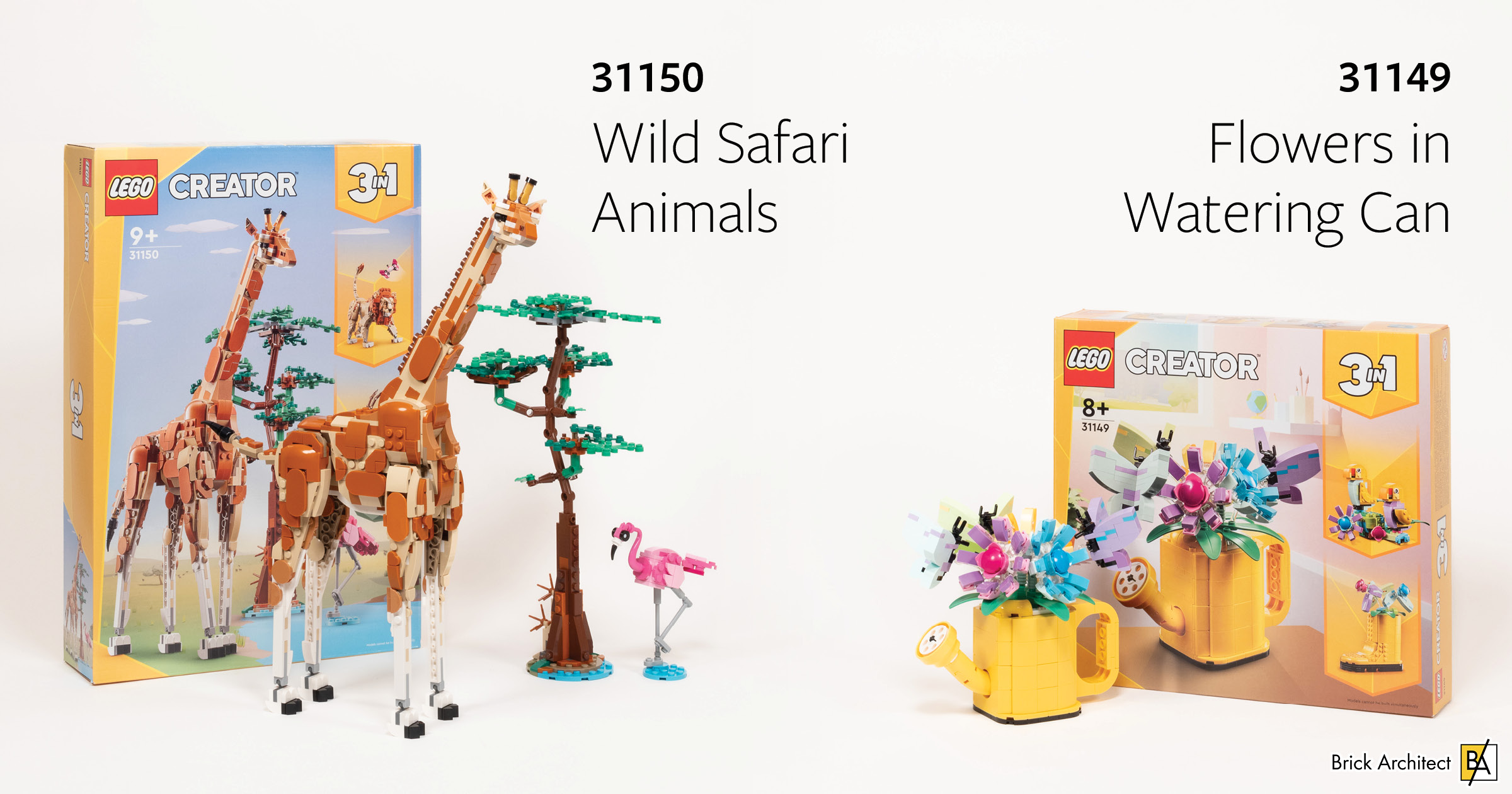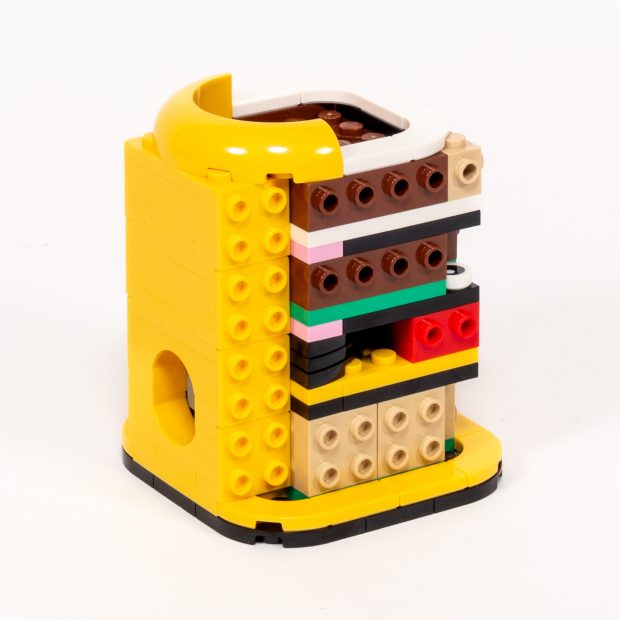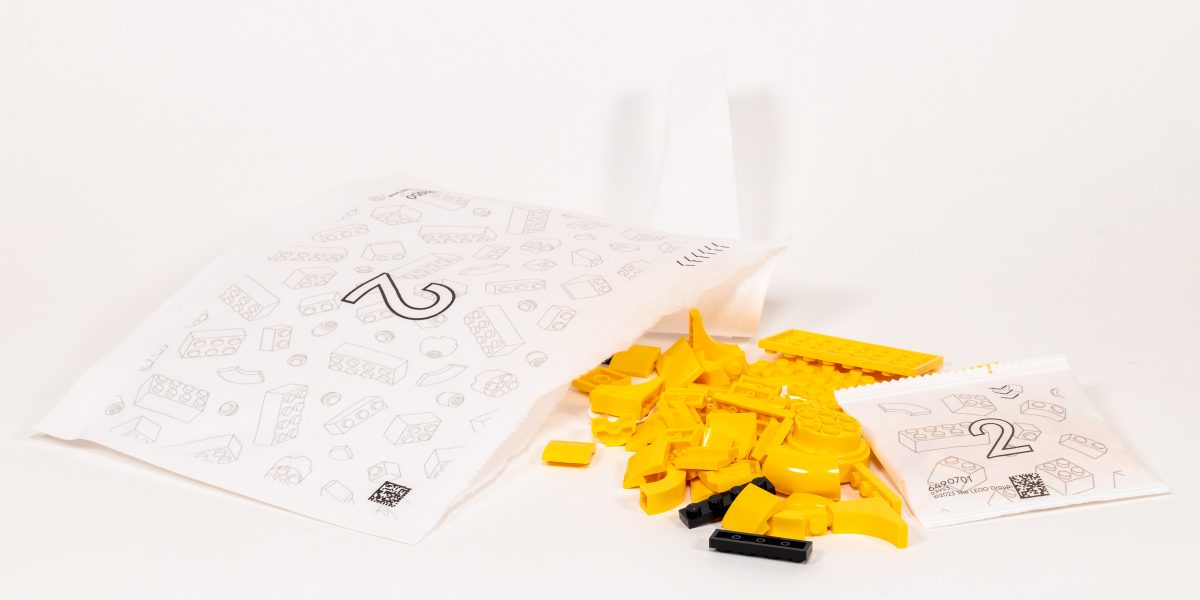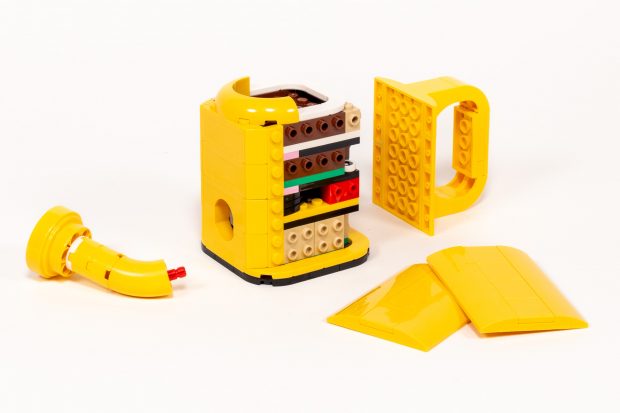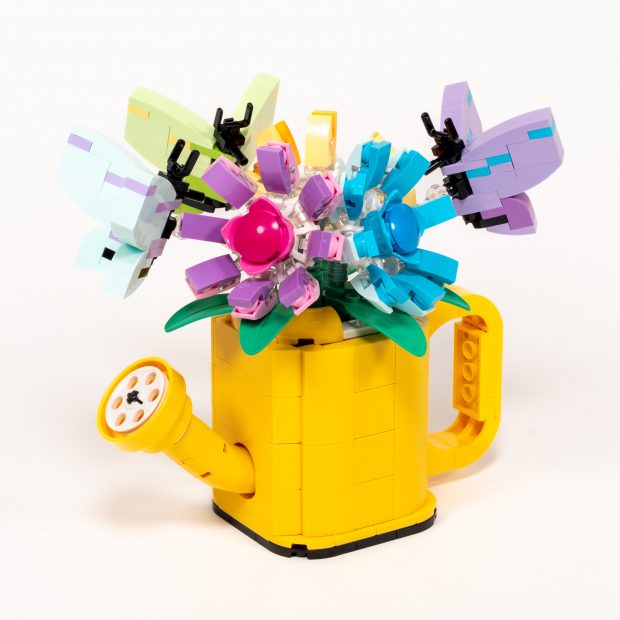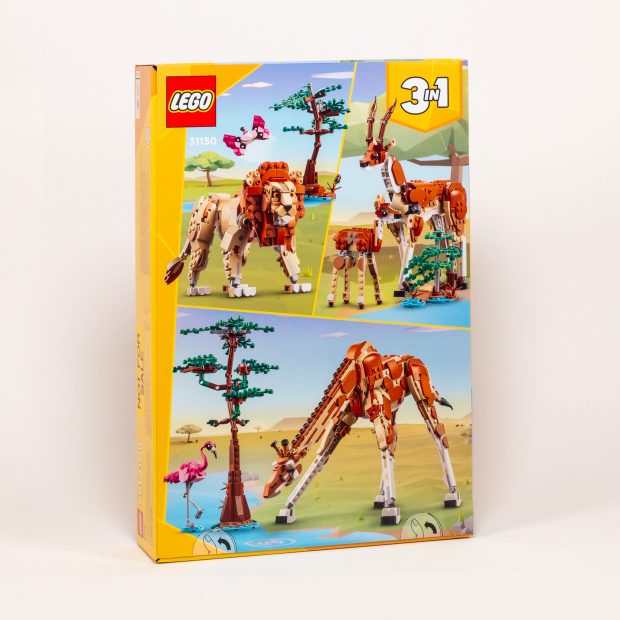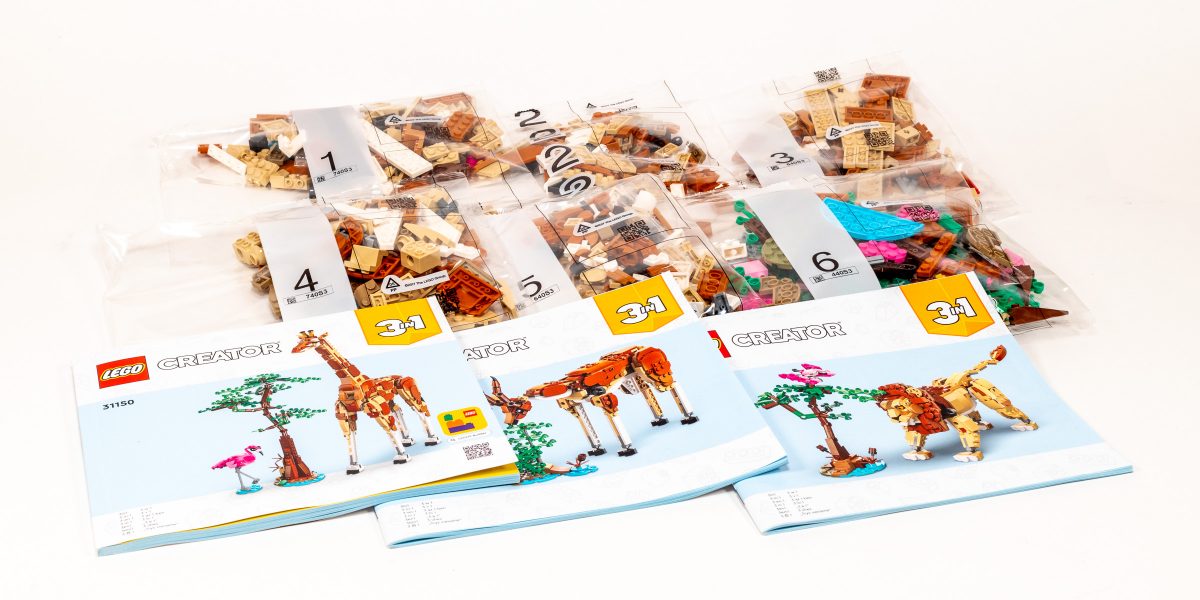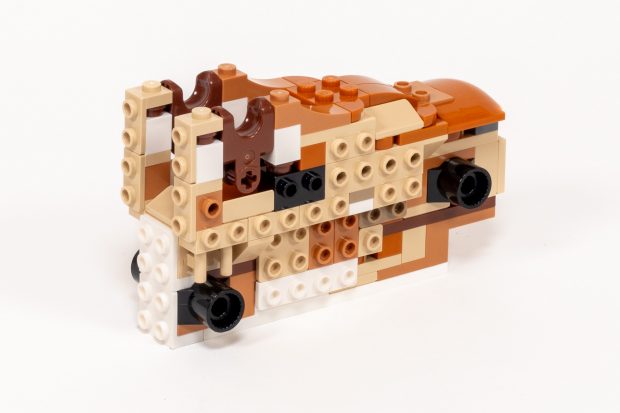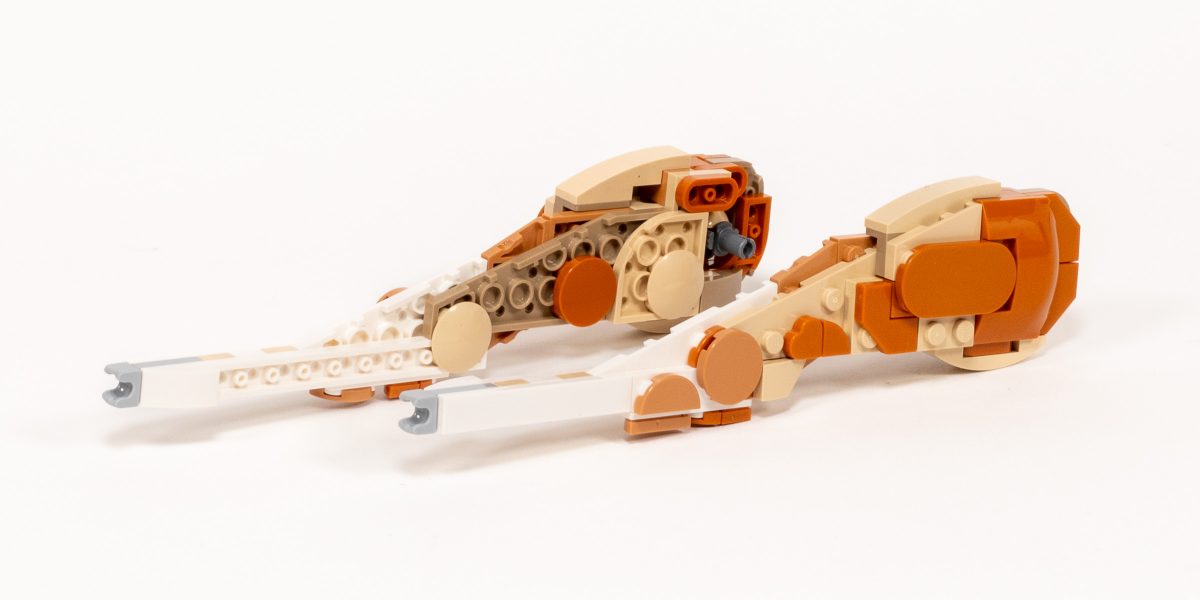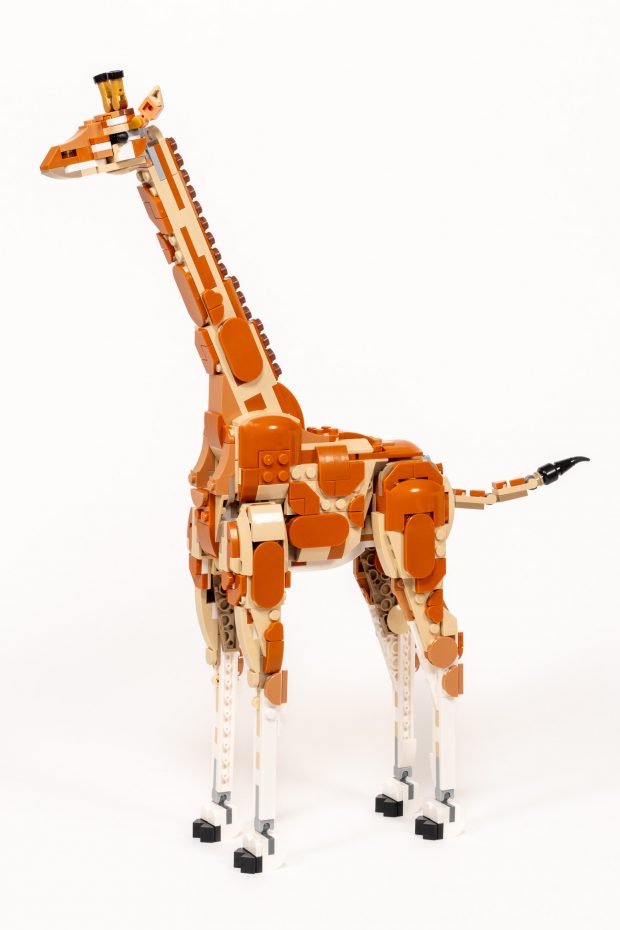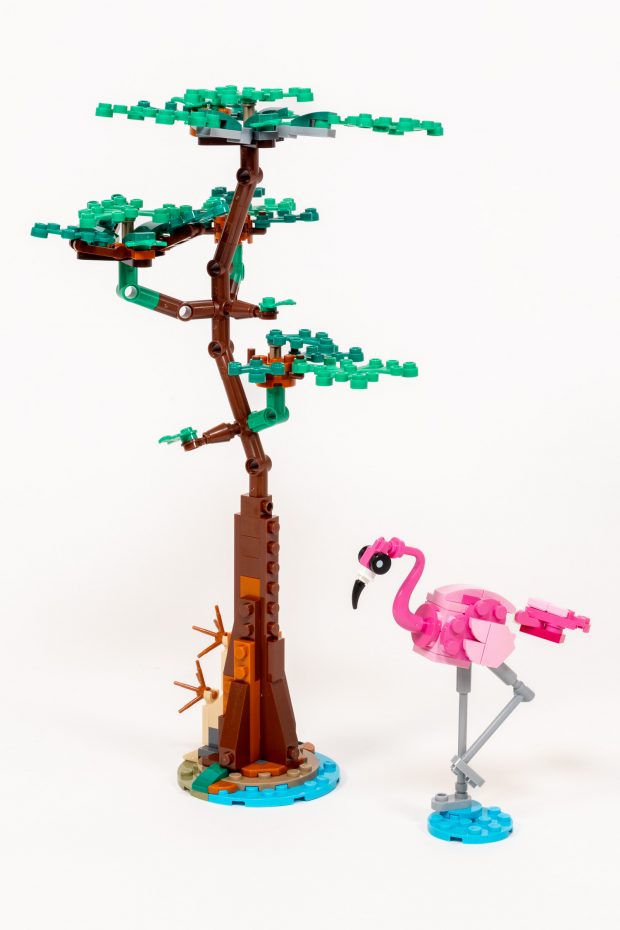Review: #31149 Flowers in Watering Can & #31150 Wild Safari Animals
3-in-1 sets are often a good value, but can either of these upcoming sets earn top marks as a great model and building experience?
I am excited to share reviews of two upcoming LEGO Creator 3-in-1 sets: #31149 Flowers in Watering Can & #31150 Wild Safari Animals. As these are smaller sets, these are a bit more casual than reviews of sets aimed at adult builders.
#31149 Flowers in Watering Can
This is the smaller of the two sets, and is priced at $29.99 (29.99€ / £24.99 / 39.99 CAD / 49.99 AUD) for 420 pieces. As it is a 3-in-1 model, it comes with instructions to build three different models using the same selection of parts: The watering can toy (featured on the front of the box), a welly boot with flowers, and two birds on a perch.
Typically, the first model uses almost every part in the set, but the other two models will have a handful of extra parts. A good way to get a sense for how much smaller the secondary models are is to compare the number of pages in each instruction booklet.
The three models in this set are:
- Watering can toy – 84 pages.
- Welly boot with flowers – 68 pages.
- Two birds on a perch – 62 pages of instructions (64 pages minus 2 pages containing the complete partlist).
First Impressions
I do love the bright colors on the box, but the simplicity of the main model doesn’t capture my imagination. That said, I am always eager to see if there are some interesting building techniques or new parts in this set.
Build Process
This set contains three numbered paper bags. This was my first time encountering the paper bags which The LEGO Group is moving to over time. I am excited to see how this works when I start building the set, but my initial impression of the paper bags is cautiously optimistic. The paper feels pretty thin, and the perforations look easier to open than the plastic bags which they are replacing.
The first bag results in a very dense central assembly that is covered by a rainbow selection of SNOT elements on three sides, with the fourth side covered in smooth [yellow] elements with a hole for the spout to attach. There’s a lot of weird stuff hidden in the central core including curved elements, eyes, and parts in many different colors. I’m sure all these parts are hiding here to be used differently in the other two models.
Bag 2 contains another thing that I’ve never seen yet, a pre-pack bag within a larger numbered bag that is also paper. The smaller bag has a notch to make it easier to open.
This bag is quick, since it is basically four small sub-assemblies that snap onto each side. The front and back are identical, the handle is simple and brick-built, and the spout attaches using Technic axles.
The third bag takes more time to assemble than the two previous bags. That’s because there are a ton of tiny, brightly colored parts in here. Each of the three flowers have eight petals, each of which is built using four small elements then carefully clipped to the center of the flower. The three butterflies are equally delicate, since they are built using layers of plate with two or three colors per butterfly.
Build Time: 33 minutes (Bag 1: 9 minutes, Bag 2: 5 minutes, Bag 3: 19 minutes.)
Conclusion
I am ultimately very satisfied with this set, as it is cute, offers a good value, and some interesting building techniques, especially given that this is an inexpensive set aimed at ages 8+. I do think parents will want to consider the attention span of their child when considering this set, as the flowers and butterflies will require a lot more patience than your typical 8+ City or Friends set.
Given the target audience for this website is adults, I am happy to give #31149 Flowers in Watering Can a Recommended (4/5 star) rating as it offers a good building experience, a good value, a nice selection of parts in a wide range of colors. In particular, I think many folks will pick this up to get six of the new 2×6 Leaf, Smooth (part 3565) elements in a modestly priced set.
#31150 Wild Safari Animals
The larger of the two sets is more than twice the price and less than twice the part count, and features three different models based on safari animals. #31150 Wild Safari Animals costs $64.99 (64.99€ / £54.99 / 84.99 CAD / 99.99 AUD) for 780 pieces.
Since this is a 3-in-1 set, there are instructions for two additional models inside the box. They are featured prominently on the back of the box as well.
The three models in this set are:
- Posable Giraffe, Flamingo, and Tree – 156 pages.
- Lion, Tree, and Butterfly – 80 pages.
- Gazelle family – 77 pages of instructions (80 pages minus 3 pages containing the complete partlist).
First Impressions
Of the two sets, #31150 Wild Safari Animals appealed to me more at first glance. The large brick-built giraffe is certainly the highlight of the main set, although the tree and flamingo create a more complete scene. I was especially impressed by the giraffe which captures their tall, slender, bony body in a convincing way. The large rounded patches of darker colors over the tan body make me think this is meant to be a reticulated giraffe, even though in practice all giraffes have similar patterning.
Build Process
This set contains bags for the six numbered stages, but none of them are in the new paper bags which we saw in the other set. I am eager to get started and see howthe giraffe looks in real life.
The first bag includes a ton of SNOT pieces, and it will quickly become clear why — during this bag, we build a single dense aseembly which upon closer look at the box cover it is clear that this will form the chest and back of the giraffe’s body. The legs will attach to a pair of rotation joints on each side, and we have a pair of ball joint sockets near the neck, which will probably allow you to change the angle of the neck as well.
The second bag goes a bit more slowly, as it takes a bit more time to carefully position multiple layers of curved plates and tiles to create the patterning on the side of the body. We also add a cute little tail on the back at this time.
Continuing to the third bag, we build a long neck and very cute head that is perced on top. The patterning on the neck does look a bit blocky, which takes away from the smooth fur of a real giraffe.
The fourth bag build the two rear legs, which are basically identical but reversed. This was my first time seeing the new 2×2 Round Tile, Inverted (part 3567) which is pretty well hidden in the inside of the legs, but it’s still nice to get a new part.
With just two bags to go, the fifth bag gives us the slimmer front legs, and the four identical feet. Despite the slender legs and tall stature, it stood up perfectly the first time I tried. The rear legs have a little bit of articulation and the front legs have a bit more.
The sixth and final bag adds a flamingo and a small tree. The tree is very crude with a rough looking trunk and branches coming out at strange angles, although to be fair – acacia trees which are major part of their diet are pretty scraggly looking trees. The flamingo is small but very well done, with a SNOT assembly that brakes the grid because it is not horizontal to the table once finished.
Build Time: 83 minutes (Bag 1: 10 minutes, Bag 2: 12 minutes, Bag 3: 14 minutes, Bag 4: 13 minutes, Bag 5: 13 minutes, Bag 6: 22 minutes.)
Conclusion
I am left with mixed feelings about this set. On the one hand, it offers a good (if not great) value and a lot of parts in useful earthtones. On the other hand, the patchwork appearance used to create the iconic patterning on the giraffe ends up looking pretty rough while in real-life, they have tight skin and smooth fur with short coarse hairs. While the flamingo is excellent, the three felt like an afterthought and the model would be better off without it.
Given my mixed impressions, #31150 Wild Safari Animals earns a middle-of-the road “Good” (3/5 star) rating. And to be clear, this is a good LEGO set and the giraffe has realistic musculature and is somewhat posable. The more complex building techniques result in a longer build time, which means more value for folks who want to get more building time for the dollar.

